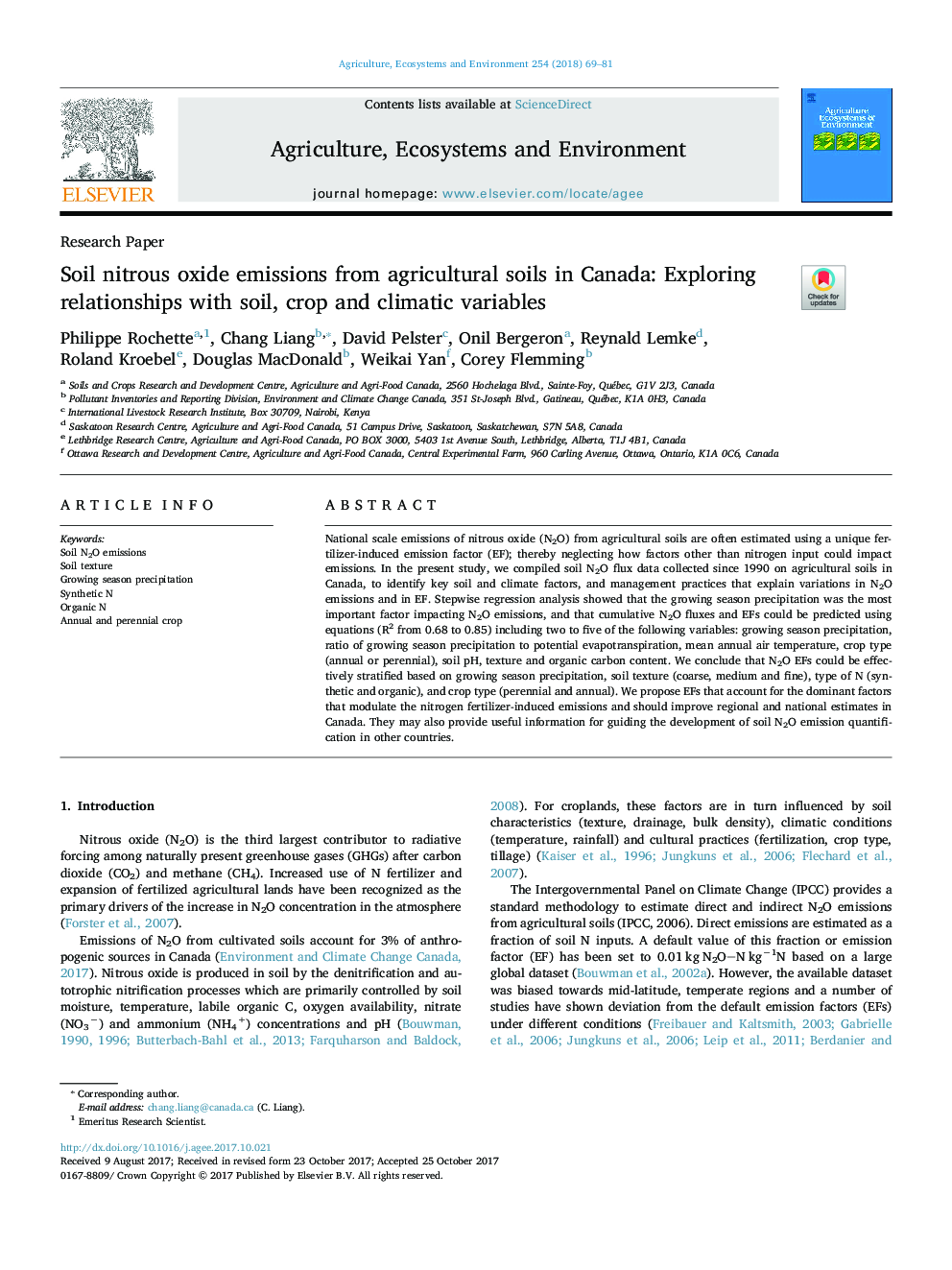| Article ID | Journal | Published Year | Pages | File Type |
|---|---|---|---|---|
| 8487203 | Agriculture, Ecosystems & Environment | 2018 | 13 Pages |
Abstract
National scale emissions of nitrous oxide (N2O) from agricultural soils are often estimated using a unique fertilizer-induced emission factor (EF); thereby neglecting how factors other than nitrogen input could impact emissions. In the present study, we compiled soil N2O flux data collected since 1990 on agricultural soils in Canada, to identify key soil and climate factors, and management practices that explain variations in N2O emissions and in EF. Stepwise regression analysis showed that the growing season precipitation was the most important factor impacting N2O emissions, and that cumulative N2O fluxes and EFs could be predicted using equations (R2 from 0.68 to 0.85) including two to five of the following variables: growing season precipitation, ratio of growing season precipitation to potential evapotranspiration, mean annual air temperature, crop type (annual or perennial), soil pH, texture and organic carbon content. We conclude that N2O EFs could be effectively stratified based on growing season precipitation, soil texture (coarse, medium and fine), type of N (synthetic and organic), and crop type (perennial and annual). We propose EFs that account for the dominant factors that modulate the nitrogen fertilizer-induced emissions and should improve regional and national estimates in Canada. They may also provide useful information for guiding the development of soil N2O emission quantification in other countries.
Related Topics
Life Sciences
Agricultural and Biological Sciences
Agronomy and Crop Science
Authors
Philippe Rochette, Chang Liang, David Pelster, Onil Bergeron, Reynald Lemke, Roland Kroebel, Douglas MacDonald, Weikai Yan, Corey Flemming,
